Heatit Z-TRM3 Handleiding
Heatit
Thermostaat
Z-TRM3
Bekijk gratis de handleiding van Heatit Z-TRM3 (8 pagina’s), behorend tot de categorie Thermostaat. Deze gids werd als nuttig beoordeeld door 35 mensen en kreeg gemiddeld 4.8 sterren uit 18 reviews. Heb je een vraag over Heatit Z-TRM3 of wil je andere gebruikers van dit product iets vragen? Stel een vraag
Pagina 1/8

1. INTRODUCTION
Heatit Z-TRM3 is an electronic thermostat for electrical floor heating,
designed to be mounted in a standard flush box. The thermostat has
a built-in Z-Wave chip that can be connected with Home Automation
systems. Heatit Z-TRM3 is equipped with a single-pole relay and fits
into System 55 frames. The thermostat can withstand a load of max
16A /3600W at 230V. The thermostat may be used for water based
heating if the thermostat is linked to the Heatit Z-Water.
NB! If the sensor mode is changed to A or AF mode then a room
sensor compensation process will start, which limits maximum power
output to 75%. The thermostat adapts to the environment within a
few days. No internal sensor calibration should be performed during
the first few days.
2. STATEMENT REGARDING PRODUCTS FROM MULTIPLE
MANUFACTURERS
Please read this before installation
This device may be used with all devices certified with the Z-Wave Plus™
certificate and should be compatible with such devices produced by
other manufacturers. Every primary controller is different depending on
the manufacturer, their target consumer and intended use/application.
Please review the functionalities implemented by the primary controller
you intend to use with our Z-Wave Plus certified device to ensure that it
provides the necessary controls to take full advantage of our product’s
capabilities.
3. BEHAVIOR WITHIN THE Z-WAVE NETWORK
This device may be operated within any Z-Wave network with
Z-Wave-certified devices from other manufacturers. All non-battery
operated nodes within the network will act as repeaters regardless of
manufacturer to increase the reliability of the network. On delivery, the
device does not belong to any Z-Wave network. The device needs to be
added to an existing network to communicate with the other devices
within it. Devices may also be removed from a network. The add/remove
processes are initiated by the primary controller of the Z-Wave network.
The primary controller has a mode for adding or removing devices.
Please refer to your primary controller manual on how to set the
primary controller in add/remove mode. The device may only be
added or removed from the network if the primary controller is in
add/remove mode.
4. QUICK START
1. Switch off the mains supply (disable the fuse).
2. Open the wall switch box.
3. Connect wires according to the labeling described in
chapter 5 ”Installation”.
4. After verifying the connections, switch the mains supply back on.
5. Set the primary controller in add mode (security/non-security).
6. Press and hold the center button until “OFF” is shown on the
display (approx. 10 seconds).
7. Press down button until you reach “CON”, press and hold until the
display shows a rotating light pattern.
8. The thermostat will display “INC” when the thermostat is
successfully added.
NB! If adding/removing fails, Err (error) will appear.
HEATIT
Z-TRM3
Firmware 4.0
Installers manual
Ver 2020-C
TABLE OF CONTENTS
1 Introduction
2 Statement regarding products from multiple manufacturers
3 Behavior within the Z-Wave™ network
4. Quick Start
5. Installation
5.1 Controls
6. Add/Remove
6.1 Method 1 Standard (manual)
6.2 Method 2 SmartStart (automatic)
7 Factory Reset
7.1 Startup
8 Principles of regulation
9 Programming thermostat
10 Temperature shown in display
11 Standby and main screen
12 Choice of sensor
13 Selecting the right Ohm value for your external floor sensor
14 Calibration
15 Brightness
16 Hysteresis (dIF)
17 Min/Max temperature settings
18 Fast functions from Standby / Main Screen
18.1 Display on/off - don/doF
18.2 Childlock - Lock
19 Error codes
20 Z-Wave QR-code / DSK
21 Security
22 Node Information Frame
23 Associations
24 Configuration parameters
25 Command class specifications
Product information
01.03.20

51,1mm
15,6mm21,3mm
49,5mm
49,5mm
5. INSTALLATION
Installation must be done by a qualified electrician in accordance with
the National Building codes. Before installation, disconnect any power to
the thermostat mains. During installation of the thermostat, power to the
thermostat must be disconnected AT ALL TIMES!
5.1 CONTROLS
Use e.g. a small slotted screwdriver. Start by carefully removing the front
cover by pushing the release springs. The front cover and the frame may
now be removed.
Connect the wires to the thermostat terminals:
Use 1,5mm² or 2,5mm² according to load.
HEATING (N) Heating cable connection (Neutral)
N Power connection (Neutral) 230V
L Power connection (Live) 230V
HEATING (L) Heating cable connection
FLOOR SENSOR NTC type (10, 12, 15, 22, 33 or 47kΩ)
Default 10kΩ
EXTERNAL SENSOR NTC type (10, 12, 15, 22, 33 or 47kΩ)
Default 10kΩ
Next, position the thermostat and mount it into the wall flush box
using 2-4 screws. Position the frame over the flush box, then position
and carefully press the front cover until it snaps in place. Check that
the front cover has snapped in place properly on both sides. The front
cover should now fit firmly on all sides. In order to read the Power
Made in EU
16A 230V~
50/60HZ
IP21
TF 058
HEATING L
L
N
HEATING N
FLOOR
SENSOR
EXTERNAL
SENSOR
Z-T RM3
Release spring
58,8mm
87mm
1: Left 2: Center 3: Right
MULT IREG® Z-WAVE
Metering, the load needs to be connected to both heating L + N.
NOTE! The top cover has to be installed when the thermostat is
connected to the main power source. The thermostat is not a SELV
product. All voltage parts must be considered to be 230VAC.
6. ADD/REMOVE
The primary controller/gateway has a mode for adding or removing
devices. Please refer to your primary controller manual on how to set the
primary controller in add/remove mode. The device may only be added
or removed from the network if the primary controller is in add/remove
mode. When the device is removed from the network, it will NOT revert to
factory settings.
There are two ways to add the Heatit Z-TRM3 to a Z-Wave network.
6.1 METHOD 1: STANDARD (MANUAL)
1. Press Center (confirm) for 10 seconds. The display will show OFF.
2. Press Right (down) 5 times until you see Con on the display.
3. Start the add/remove device process in your primary controller.
4. Start the add/remove mode in the Heatit Z-TRM3 by pressing
Center (confirm) for approximately 2 seconds.
Adding/removing mode is indicated on the display by rotating
LED segments on the display. This lasts until the timeout occurs
after 90 seconds, or until the module has been added/removed
in the network. Confirmation will show Inc/EcL on the display. Exit
programming mode by choosing ESC in the menu. Your thermostat
is now ready for use with default settings.
NB! When the thermostat is removed from the gateway, the
parameters are not reset. To reset the parameters, see Chapter 7:
”Factory reset”. If adding/removing fails, Err (error) will appear.
Please perform a ”remove device” process and try again. If Err displays
again, please see Chapter 7: “Factory reset”.
6.2 METHOD 2: SMARTSTART (AUTOMATIC)
SmartStart enabled products can be added into a Z-Wave network
by scanning the Z-Wave QR-Code present on the product with a
controller providing SmartStart inclusion. No further action is required
and the SmartStart product will be added automatically within 10
minutes of being switched on in the network vicinity.
The Z-Wave QR-Code locations may be found in Chapter 20
”Z-Wave QR-Code/DSK”.
7. FACTORY RESET
By pressing buttons Right and Center (down and confirm) for 20 seconds,
the thermostat will perform a complete factory reset.
NB! Please use this procedure only when the primary controller/ gateway
is missing or otherwise inoperable.
The device will display rES for 10 seconds while performing a factory reset.
When rES no longer is displayed, the thermostat has been reset.
7.1 STARTUP
AFTER POWERING UP THE THERMOSTAT FOR THE FIRST TIME, ALL
PARAMETERS WILL HAVE DEFAULT SETTINGS.

8.
8.
8.
8.
PRINCIPLES OF REGULA
PRINCIPLES OF REGULA
PRINCIPLES OF REGULA
PRINCIPLES OF REGULATION
TION
TION
TION8. PRINCIPLES OF REGULATION
Using Floor / External sensor (F, A2 or A2F-Mode)
The thermostat uses temperature readings retrieved from the internal
sensor or external wired sensor to regulate heating. When you have
chosen a setpoint temperature, the thermostat will use an internal
hysteresis to regulate the temperature. This hysteresis is adjustable.
See Chapter 5 “Installation”.
Using Internal sensor (A-mode/AF mode)
If you have a set point of 20°C, the thermostat will use the full power until
the temperature is 19°C. The thermostat will then begin to regulate the
output from 19°C with a 75% duty cycle until it reaches 19,25°C. When
the temperature has reached 19.5°C the thermostat will use a 50% duty
cycle, until it reaches 20°C, then the thermostat turns off and repeats the
process. For example, at a 75% duty cycle it will turn ON for a total of 90
minutes and OFF for 30 minutes.
50% duty cycle
75% duty cycle
20 min.
30 min. 30 min. 30 min.
20 min.
2 hrs.
2 hrs.
20 min.
9. PROGRAMMING THE THERMOSTAT
To activate the programming mode, press Center (confirm) for 10
seconds. The display will show OFF. You are now in programming
mode. To scroll up and down in the menu, use buttons 1 and 3 (left
and right) to navigate. To enter the submenu, press Center (confirm).
Always confirm your setting by pressing Center (confirm) for
2 seconds. Sto will appear to indicate saved settings.
10. TEMPERATURE SHOWN IN DISPLAY
By default, the temperature shown on the display is the setpoint. This may
be altered with parameter 13: “Temperature display”. You may calibrate
the sensor values ±4 degrees using parameters 10 to 12.
11. STANDBY AND MAIN SCREEN
When the thermostat remains untouched for a while, it will automatically
revert to the standby screen. The standby screen will by default show
the setpoint temperature. By pressing any button once, you will see the
measured temperature. By pressing the left or right (up or down) button
one more time, you will change the setpoint.
Menu structure
OFF Turns the thermostat off.
Sensors:
CHOICE OF SENSORS
F Depending on your choice of sensors, the menu
will change.
SEn Select the right Ohm value for your external/floor sensor.
NTC type (10, 12, 15, 22, 33 or 47kΩ). Default 10kΩ.
CAE Calibration for external sensor.
CAF Calibration for floor sensor.
CAr Calibration for internal sensor.
br1 The display brightness may be adjusted in this menu.
Con Activation of inclusion/exclusion mode.
dIF Hysteresis.
ALo Setting lowest allowed temperature (limitation).
(Air sensor)
AHI Setting highest allowed temperature (limitation).
(Air sensor)
Flo Setting lowest allowed temperature (limitation).
(Floor sensor)
FHI Setting highest allowed temperature (limitation).
(Floor sensor)
A2L Setting lowest allowed temperature (limitation).
(A2 air sensor)
A2H Setting highest allowed temperature (limitation).
(A2 air sensor)
ESC Escape – exit programming menu.
12. CHOICE OF SENSOR
The thermostat has a range of choices when it comes to sensors.
To access the menu, press Center (confirm) for 10 seconds, then press
Right (down) once. An A will appear on the display. Then press Center
(confirm) again and choose modes while moving up and down with
buttons Left or Right:
F Floor sensor
A Internal sensor
AF nternal sensor + Floor sensor
A2 External room sensor
A2F External room sensor + Floor sensor
When you have chosen sensor mode, press the Center (confirm) button.
If you choose F without having a floor sensor connected, Er4 will be
shown in the display. If you choose A2 or A2F and there is no external
sensor installed, Er5 will be displayed on the screen.
NOTE: Wooden floors require that a floor sensor is connected in order
to limit the floor temperature to a maximum of 27°C (in accordance with
specifications from most wooden floor manufacturers).
When using the thermostat is used in (AF or A2F) the floor limiter FHI is
automaticly set to 27°C. When using any other sensor type (A, F or A2F)
the max temperatures is default 5°C minum and 40°C maximum.
13. SELECTING THE RIGHT OHM VALUE FOR YOUR EXTERNAL
FLOOR SENSOR
The following values are available: NTC type (10, 12, 15, 22, 33 or 47kΩ).
Default 10kΩ. Confirm with the Center (confirm) button. You can not
combine two types of NTC sensors.
Product specificaties
| Merk: | Heatit |
| Categorie: | Thermostaat |
| Model: | Z-TRM3 |
| Kleur van het product: | Zwart |
| Kinderslot: | Ja |
| Stroombron: | AC |
| Internationale veiligheidscode (IP): | IP21 |
| Interface: | Z-Wave |
| Duurzaamheidscertificaten: | CE, RoHS |
| Eenheid van de maatregel: | °C |
| Frequentie: | 868.4 MHz |
| Naleving van duurzaamheid: | Ja |
| AC-ingangsspanning: | 230 V |
| AC-ingangsfrequentie: | 50/60 Hz |
| Temperatuursensor: | Ja |
| Slimme thermostaat: | Ja |
| Geschikt voor vochtige ruimtes: | Nee |
Heb je hulp nodig?
Als je hulp nodig hebt met Heatit Z-TRM3 stel dan hieronder een vraag en andere gebruikers zullen je antwoorden
Handleiding Thermostaat Heatit

15 Augustus 2025

5 November 2024

24 September 2024

24 September 2024

16 Juli 2024

16 Juli 2024

16 Juli 2024

16 Juli 2024

7 Juni 2023

6 April 2023
Handleiding Thermostaat
- TP Link
- ELV
- Pro1
- Robertshaw
- Radson
- Basetech
- Tru Components
- Mainstreet Equipment
- Coati
- Grasslin
- 2Heat
- VDH
- Agpo Ferroli
- Crestron
- Essent
Nieuwste handleidingen voor Thermostaat
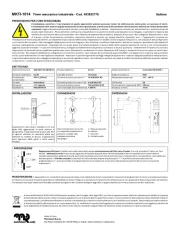
2 September 2025
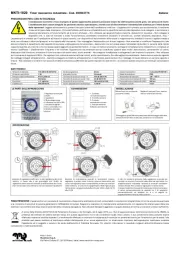
1 September 2025
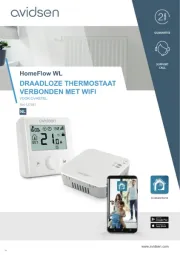
30 Augustus 2025
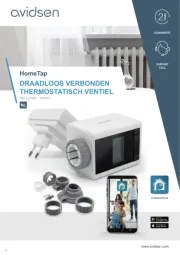
30 Augustus 2025
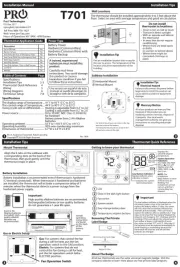
26 Augustus 2025
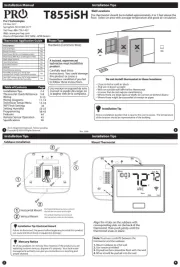
26 Augustus 2025
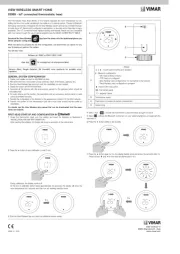
26 Augustus 2025
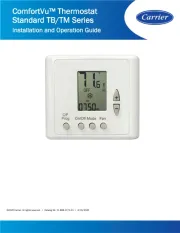
26 Augustus 2025
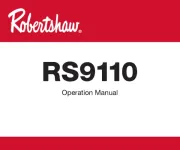
26 Augustus 2025
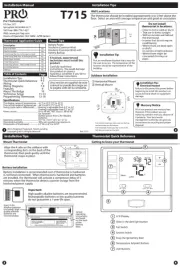
26 Augustus 2025